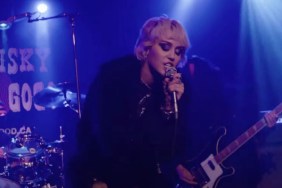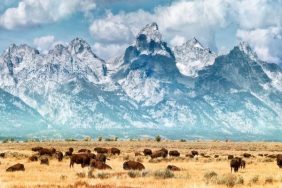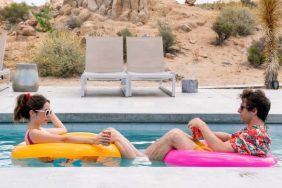Rick Farman is co-founder of Superfly Productions, co-creators of the hugely successful Outside Lands and Bonnaroo Music Festivals, and takes a personal pride in the success of the events he’s played such an integral role at producing.
A few journalists took part in a conference call recently to discuss the evolution of Outside Lands, and what makes the Golden Gate Park music marathon such a special experience, as well as the philosophy behind a slightly more intimate festival than the Coachella-size monsters that take place each Summer. Check out a few highlights from that conversation below.
On the need to be bigger and broader every year:
I wouldn’t say bigger is our motivation. You know, we’ve had basically the same capacity at this festival since year one, and have sold – we will have sold the same amount of tickets over you know, the last three festivals. So really, no, the evolution for us is how much more creative we can get? How many more interesting things that we can do?
You know this year for instance, you know we’re growing out the Beer Lands area that we introduced last year. We are adding this Cheese Land area that we’re excited about. So you know, it’s really about how much more creative, how many more interesting things can we do you know with the festival? And how are those things connected to you know the Bay Area culture? How can we best represent that?
On what can be improved upon from previous years:
It is, at the end of the day, kind of about testing things out and then seeing how to evolve them. So like another example is what we’ve been doing through McLaren Pass. You know, we – I think it was two years ago was the first time we used McLaren Pass – the wooded area. And each year, we’ve been able to sort of understand more about how that area can be utilized. What the potential of it is.
So last year for instance, we added in the Outside Lands experience. You know, this year we’re doing a little bit more stuff in there. We’re going to have more coffee opportunities there. We’re looking at you know a cooler seating arrangement to allow people to really utilize that area fully.
On keeping the vendor/artisan focus local:
We really, you know, start with the creative process of what would be the most cool and interesting things to the audience and again representative of San Francisco culture and the whole Bay Area region and you know, beta test them a little bit. Put out you know a small experience that then can grow into a much, much bigger part of the festival.
That’s what we you know did with Wine Land at the beginning, you know, and certainly what we did with the food where the first year we probably had you know only a certain percentage of sort of the artisan type vendors. You know, a lot of the vendors were local. Not all of them were. Each year we sort of built more relationships to phase more out to where we’re you know pretty much exclusively Bay Area restaurants.
So getting that process down how that works in the festival atmosphere, have a restaurant come and be a great food vendor. We took a lot of deliberate steps to make sure that it was smooth development along the way.
On the need for more intimate festivals in addition to the Bonnaroos and Coachellas:
We’ve been producing large scale music festivals for long enough to have learned a few… I don’t want to call them tricks, but sort of best practices, maybe. We’ve really felt it was extremely beneficial to have all different types of experiences, and small ones are important. You know, they may only touch a few people at any given moment. Those experiences can be really profound, and I think they affect the overall dynamic and feeling that a festival has. It doesn’t have to be just about big stages and big activities. The small opportunities are ones that, you know, very frequently leave the deepest impressions with people.
On the biggest challenge in keeping Outside Lands going:
In 2008 there were five national festivals which started across the country, including in major markets like you know, Denver and New York. And Outside Lands is the only one that’s still standing of that group, so we’re proud of that.
First and foremost, I think is just the strength of our partnership between us and Another Planet, and Star Hill. You know, everybody in you know those years where we were figuring it out and maybe effected by the economy a bit, really were committed to the long-term of building something great here, as was frankly the City of San Francisco and the Parks Department were extremely supportive.
And so you know, we’ve just felt in our gut that the richness of the Bay Area and you know the destination that it is, and the passion of music fans locally would sustain and create an iconic event over the long-term. So that’s sort of at the core of it was that we just – you know, we persevered basically and – because we – you know, we’ve got a really experienced and A-class team of music and concert promoting professionals.
For us, it’s not just about music on stages and we don’t think it is for the audience either. You know, festivals have this amazing – the format provides an amazing opportunity to expose people to lots of different types of things. And you know Outside Lands is actually been a leader in that – in sort of integrating the culinary aspect into festivals. You see nationally there’s a lot of other festivals that are kind of upping their game. Bringing on named chefs, bringing in local restaurants. Even my company, you know, we’ve developed a whole food festival concept that was inspired by a lot of the work that we did around Outside Lands.
On the setup time for each Outside Lands festival:
it’s about a week to ten days. You know, we kind of ease into it. We really try hard to not impact the use of the park in any significant way for as long as we can. So you know, our team about ten days out will start to do some things that are not particularly obtrusive. Kind of confirming their layouts and measurements and things like that.
And then about a week out, they start to put more infrastructure in place. But again, sort of doing it in a way that leaves as many you know areas that we’re using accessible to the public until you know the timeline dictates that we’ve got to, you know, make it – for safety purposes, not as accessible.

-
SCHEDULE: See the Complete Weekend Lineup!
-
WEBCAST: Watch Some of OSL Biggest Acts Live
-
PLAYLIST: The Perfect Outside Lands San Francisco Soundtrack
-
SPECTACLE: Pretty Lights Plans Fan-Interactive Light Show






